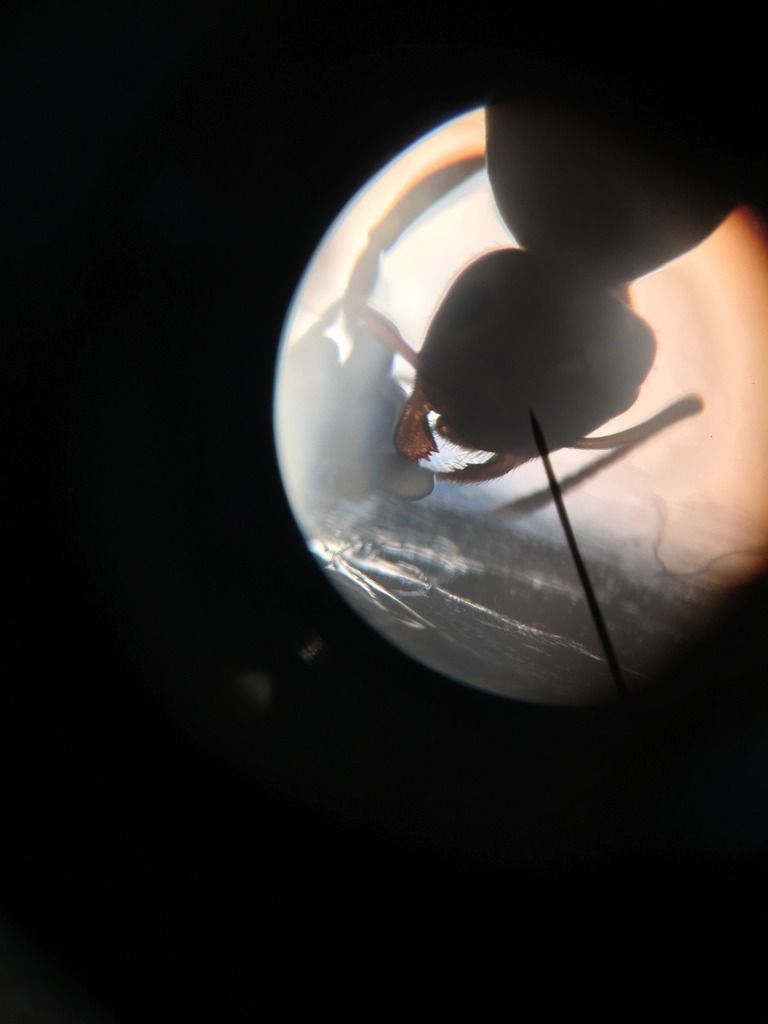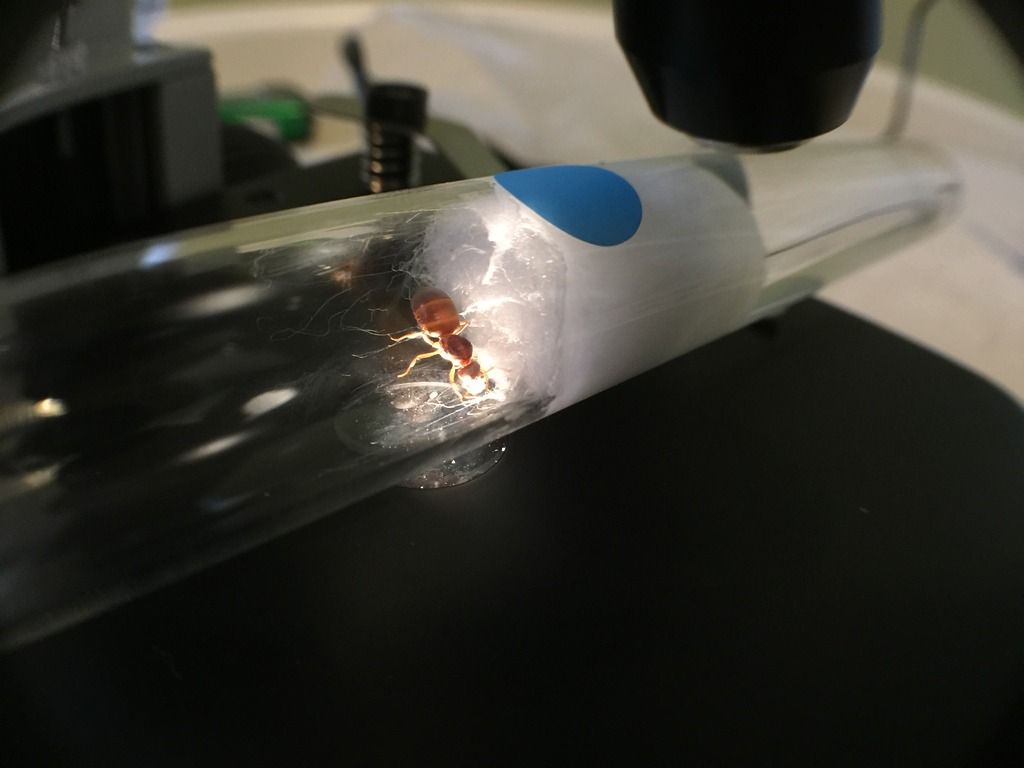1. Location of collection: Horsham, Pennsylvania. (Carpenter Park, if you'd like to Google it: 1000 Horsham Rd, Ambler, PA 19002)
2. Date of collection: September 5th, 2016.
3. Habitat of collection: Wooded, suburban area. Artificial, sandy trails but no other traces of natural sand around the park.
4. Length (from head to gaster): Approx. 9 mm to 1 cm.
5. Color, hue, pattern and texture: Dark brown with reflective gaster, looks lighter and slightly yellowish in direct light.
6. Distinguishing characteristics: Reflective gaster, lightly colored legs.
7. Distinguishing behavior: Just normal queen stuff. Nothing out of the ordinary.
8. Nest description: Well, she's living in a test tube if that qualifies...
My brother and I caught this queen during fall of last year, and just assumed she was neoniger. Upon learning that Lasius queens are actually pretty difficult to ID, I've narrowed it down to five species:
-
(Niger-group) Lasius neoniger
-
(Niger-group) Lasius alienus
-
(Niger-group) Lasius pillisartis
-
(Flavus-group) Lasius nearcticus
-
(Flavus-group) Lasius flavus
I've taken some pictures, but they're not great. I also attempted to capture some footage of her mandibles underneath a microscope I found in my house but the pictures were extremely difficult, almost impossible to get with an iPhone camera. I'll post the pics anyways though. I apologize for them in advance.




































![UA's Lasius latipes [Discontinued] - last post by UtahAnts](https://www.formiculture.com/uploads/profile/photo-thumb-5683.jpg?_r=1633467752)



